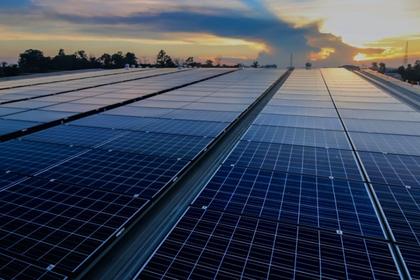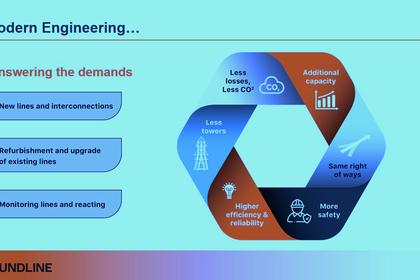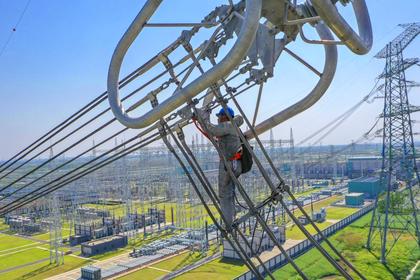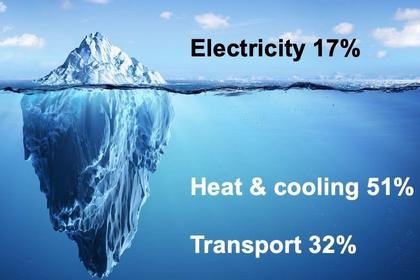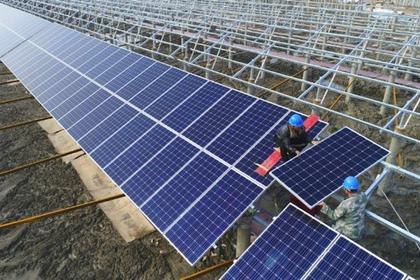
THE BENEFITS OF EVS
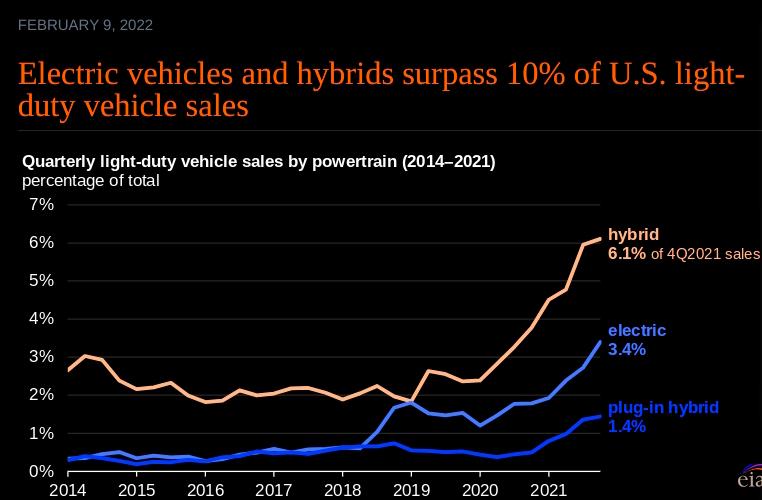
By KIMBERLY MCKENZIE-KLEMM Industry Technical Writing and Editing, TPGR Solutions, LLC
ENERGYCENTRAL - Aug 14, 2023 - Exciting and dynamic discourse occurs when a conversation regarding Electric Vehicles (EVs) commences. From green planet planning to supporting infrastructure development, topics surrounding the nuts and bolts of EVs enter into the realms of grander dreams and mundane applications. It seems best to consider EVs' past, present, and future by focusing on how and why EVs developed, what the current status of EV use and infrastructure availability brings to the table, and, as performance measures add, the goals for EV population integration along with discussing the key players in EV futures.
EVs first developed in the 1830s in England, Hungary, and the Netherlands. They predated gasoline-powered automobiles. In the late 1800s, EVs rose in preference to other types of transportation. In the 1830s, before rechargeable batteries, the “electric carriages” functioned as “one-time” trip wonders. From the 1860s to the 1890s, once lead-acid batteries developed, EVs charged up domestically without infrastructure support for traveling distances. An EVs travel range was anywhere from 25 miles to 50 miles. EVC, a start-up company for EVs in the early 1900s, accomplished the socialization of EVs through mass production and battery exchange stations. “...by the early 1900s, they had more than 600 electric cabs operating in New York with smaller fleets in Boston, Baltimore, and other eastern cities.” (1) EVC “belly-upped” by 1907. The next significant historical event for EVs became Ford’s decision to create an assembly line that produced gasoline-powered vehicles during the American Industrial Revolution and started a different market demand. The cheaper manufacture of gasoline-powered engines produced automobiles priced for the general public and took away the popularity of EVs. EVs turned into curiosities for the next half a century. Due to a USA-wide gasoline shortage in the late 1990s, manufacturers turned out a half-dozen EVs to temper the mobility suspension effect occurring population-wide. The prominent EV1 traveled 80 miles to 140 miles, dependent on the different manufacturing versions of the automobile released. The most encouraging development of this period was the Nissan Altra, the first EV equipped with a lithium-ion battery pack. When the gasoline shortage cleared, EV awareness faded and did not reappear until Tesla released the “Roadster” in 2008.
Since 2008 and throughout the 2000s, EV model builds, availability, and infrastructure support have increased exponentially. The first Hybrid EVs were launched in Japan (Toyota Prius, 1997) and the USA (Honda Insight, 1999). In the 2000s, Hybrid EVs and Plug-in Hybrid EVs (PHEVs) have bridged the gap between gasoline-powered engines and battery-charged automobiles and filled the EV marketplace. (See the graph below.) A Hybrid EV has a combustion engine and an electric battery motor. The combustion engine runs on gas. The battery motor takes an electric charge to power the car. Full Hybrid EVs are driven on the battery motor and then they switch to the combustion engine when the battery motor charge expires. A full Hybrid EV uses the combustion engine as it functions to recharge the battery motor after the battery motor charge expires. A PHEV does not recharge the battery motor from the combustion engine. (Although similar to a full Hybrid EV, it has both the combustion engine and the battery-powered motor.) Instead, a PHEV sports a removable battery motor that plugs in at independent charging stations or for home-based recharging to gain further use. PHEV sales began on a larger scale in 2010. Some of the increase in EV, Full Hybrid EV, and PHEV sales is due to more manufacturers offering EV products, and partial credit for the increases in these sales is because of the decrease in combustion engine vehicle sales (an independent weight factor).
EVs fall into the classification of light-duty vehicles. On the other hand, companies such as Ford, Tesla, GMC, Ram, and Chevrolet have also developed and released EV pickup and recreational vehicle trucks. EV trucks have towing capacities between 9,000 lbs.- 14,000 lbs. Tesla has even created an EV Semi truck in use in the United Kingdom (U.K.). EV Semi truck's overall weight is legally higher than a diesel truck by an average of two (2) tons due to the composition of the battery-powered motor and working system. EV Semi trucks perform route traffic carrying above or at normal payload weights.
Charging station availability and repair measures are not optimum for the needed infrastructure support of the increase of EVs operating on the roads. In 2023 several Federal summits and state government meetings centered around increasing plug-in charging stations and enforcing battery-powered motor standards. While this might seem like a future topic for the EV industry, the needs are current for the EV market available today. “As of September 31, 2021 there were 2,147,070 electric vehicles (BEV and PHEV) in the United States and 109,307 charger ports.” (3) This statistic points to the fact that more charging stations are required to even out the ratio of EVs in use to charging stations available. Another topic under discussion for EV infrastructure support is the drain of EV charging stations on the SMART grid and how to conduct business to alleviate energy costs and grid technology integration. This discussion includes the buying and selling of stored electricity to equip charging stations independently. Inquiries regarding private EV battery charging home units drawing on domestic power utilization are included in the SMART gird EV charging integration efforts. With limits on home power usage for overburdened power grids, the business rules of use for EV battery charging private units might have to include “separate case” billing and use business decisions.
Experiments with EV power engines for battery-electric trains have begun. “Union Pacific Railroad purchased 20 of these locomotives for its rail yards from Wabtec and Progress Rail,... The BNSF Railway Company is also testing out these kinds of trains on a route between Barstow and Stockton, California.” (4) The potential for heavier transport vehicles to become EVs looms on the horizon. This type of experiment is not the only futuristic vision for EV utilization. Aerospace designs incorporating battery-powered flight are vying for credibility. The first EV passenger airplane to fly, named Alice,(created by Eviation) took to the skies on September 27, 2022, and experienced mild success. So far, EV airplanes (including hybrid possibilities) have limited mileage capability and low weight carrying capacity fit for experimental private planes. The hope for commercial EV airlines is tenuous, but engineers are embracing the dream. Rumors abound over a “forever EV battery” charging up in eight minutes and working for 9,200 miles. If this breakthrough in reality finds the marketplace, it will revolutionize the EV industry. Maintenance and efficiency costs combined, a “forever EV battery” is expected to last twenty (20) years.
The benefits of EVs are economical, social, and personal. EV efficiency models show the prices of gas per mile keep rising, while the price of killoWatt hours (kWh) of batter-powered motor travel remains steady. Maintenance costs on an EV vs. a combustible engine system are less over time as an EV system and parts do not wear out as easily as a gasoline engines’ structure. From a social point of view, reducing CO2 emissions is a global priority to fight back against the greenhouse climate effect and EVs assist in this by keeping carbon emissions limited to building the battery-powered motors and charging them. Although carbon footprints of EVs do not register at “zero” in fact, an EV does not emit CO2 while driving. From a personal standpoint, EVs are safer to drive than combustion engine vehicles. EVs are not prone to catching fire and are heavier than gasoline powered automobiles which provides passenger security during a traffic accident. Better rates on insurance policies and current tax rebates make choosing an EV as the next family vehicle more appealing. Considering how far EVs have come from the 1830s to 2023, it appears that EVs are finally having their day. While currently popular EV models have “hit the road” in large numbers, EV improvements and transportation expansion models (including further infrastructure) are still needed. EV technology crosses transportation barriers and the benefits of EV ownership bring a tempting better choice. EVs have found a purpose and marketability as long as the population does not give up on EV integration in the automobile industry. The past, present, and future of EVs have come together and given a permanent alternative to combustible engine vehicles better for the marketplace, consumers, and desperately crying eco-system world.
References:
- Wilson, Kevin A., “Worth The Watt: A Brief History Of The Electric Car, 1830 To Present”, Car and Driver. (March 21, 2023.)
- U.S. Energy Information Administration, (graph), https://www.eia.gov/todayinenergy/detail.php?id=51218
- “Charging Stations By State”, evadoption. (September 31, 2021.) https://evadoption.com/ev-charging-stations-statistics/charging-stations-by-state/
- Benson, T., “The Electric Vehicle Revolution Is Coming For Trains”, Daily Beast. (April 8, 2022.) https://www.thedailybeast.com/the-train-of-the-future-will-be-battery-powered
-----
This thought leadership article was originally shared as part of the Energy Central Special Issue - Electrification in Transportation - July/August 2023. The communities are a place where professionals in the power industry can share, learn and connect in a collaborative environment. Join Energy Central today and learn from others who work in the industry.
------
Earlier:
